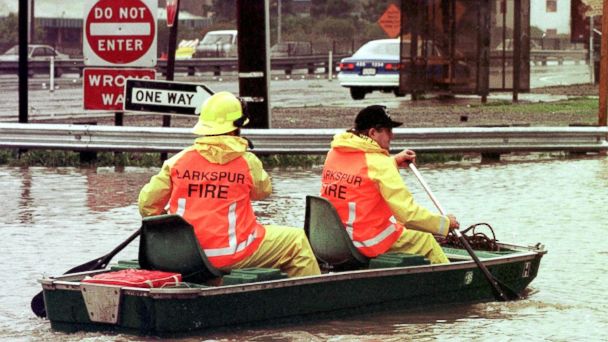2014 El Niño Warming Up to Be a Mighty One?
El Niño is a growing threat this year that could play havoc with weather patterns in the United States, forecasters say.
El Niño, named for the warm waters that occasionally occur in the Pacific Ocean near South America, brings fluctuating weather that includes droughts, flooding and heat waves.
"We have above-normal temperatures in the tropical Pacific Ocean and that often precedes an El Niño because there's a large volume of above-average water temperature below the surface of the ocean," Anthony Barnston, chief forecaster for the International Research Institute for Climate and Society, told ABC News. "Volume often tends to come up to the surface; often, but not always.

(Photo Credit: John G. Mabanglo/AFP/Getty Images)
"That's the uncertainty," Barnston said. "It's more likely to rise than not."
Some of the larger El Niños in the past have resulted in flooding and landslides in southern and central California, he added.
Barnston notes a 70 percent probability of the United States' experiencing an El Niño this year. He said the official outlook will be coming Thursday from the two agencies - his research institute and the Climate Prediction Center - and will most likely give a slightly lower probability of an El Niño event.
An El Niño affects the climate in certain seasons around the globe. Although they don't necessarily mean drastic climate fluctuations, they are fairly reliable predictors, Barnston said.
If an El Niño persists, Barnston said, it will develop between April and June and last until the start of the next calendar year for a nine-to-10 month cycle.
The warmth below the surface is a result of a Kelvin wave that was kicked up last month by westerly wind events in the western tropical Pacific, Barnston said in a climate forecast briefing last month.
ABC News Meteorologist Melissa Griffin says the pending El Niño could be strong enough to make 2014 the globally warmest year on record, with 2015 possibly even warmer.
But there's some good news in the event of an El Niño.
For the U.S. West Coast, California could be relieved from its extreme drought with a typically wetter-than-average season. Any rainfall would also extend along Southern California through Texas and all the way to Florida, Barnston said.
But it could possibly also bring too much rain and cause flooding and mudslides. The opposite effect could occur in the northwestern parts of the United States.
For the East Coast, the Atlantic Hurricane season may be less active during an El Niño, which alters the formation of hurricane winds, Barnston said.